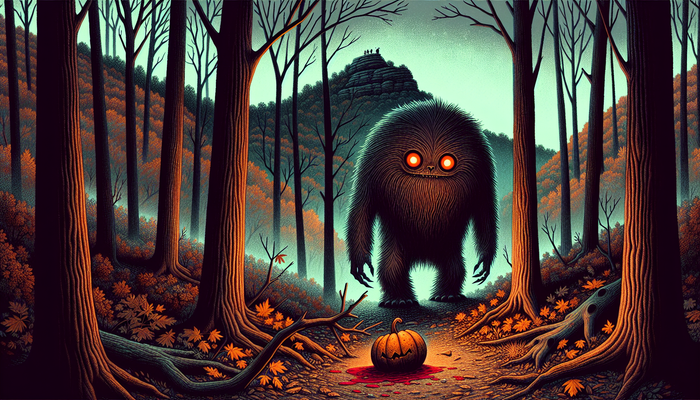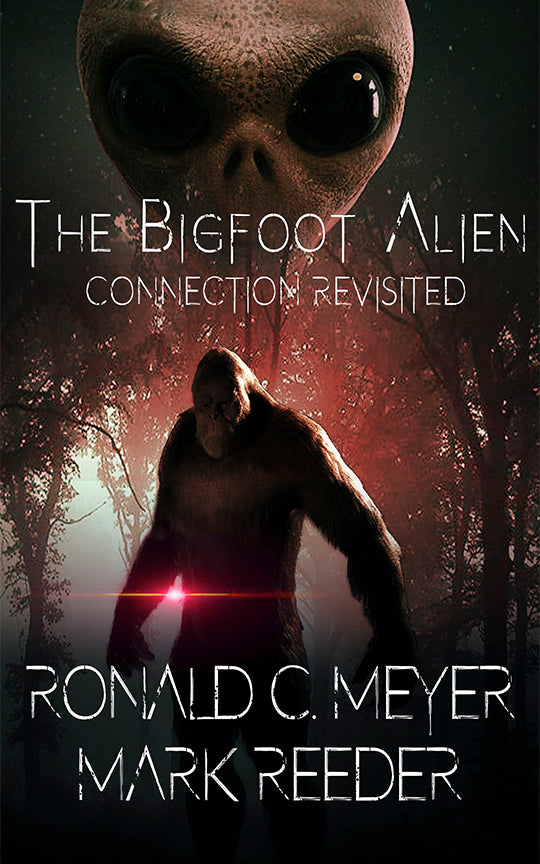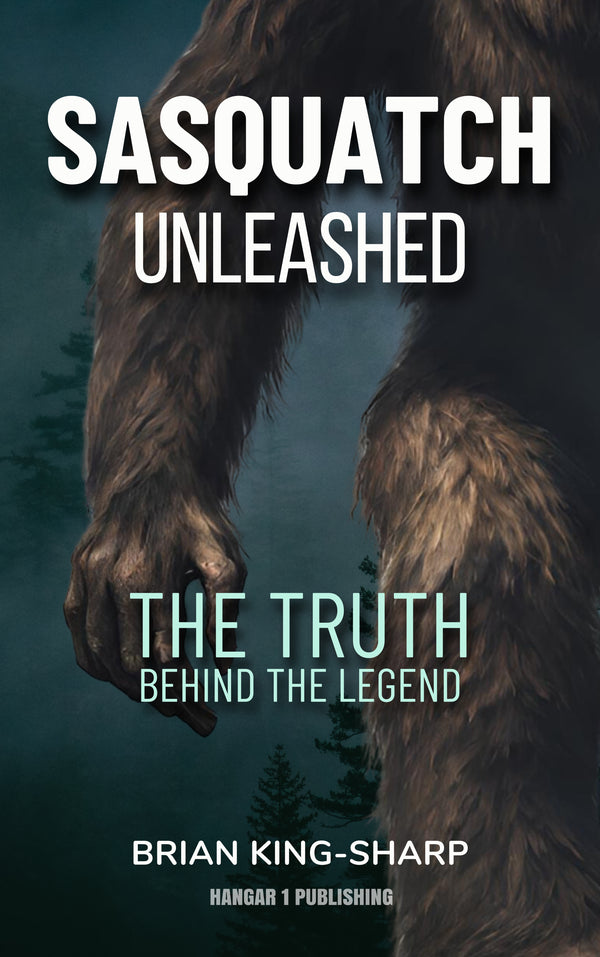Oklahoma's Elusive Bigfoot Sightings

By Dr. Elizabeth Harper, Cryptozoologist
In the realm of cryptozoology, few creatures have captured the human imagination as profoundly as Bigfoot. This elusive, ape-like being, said to roam the dense forests and remote wilderness areas of North America, has been the subject of countless stories, investigations, and debates. While sightings have been reported across the continent, one state, in particular, has emerged as a hotspot for Bigfoot activity: Oklahoma. As a biologist and historian specializing in the study of this enigmatic creature, I have dedicated years to unraveling the mysteries surrounding Oklahoma's Bigfoot sightings. Through meticulous research, analysis of eyewitness accounts, and on-site investigations, I have uncovered compelling evidence suggesting that the Sooner State may indeed be home to this legendary cryptid.
Oklahoma: A Prime Habitat for Bigfoot
To understand why Oklahoma has become a focal point for Bigfoot research, one must first consider the state's unique geographical features. The rugged terrain of the Ouachita and Kiamichi Mountains, located in the southeastern part of the state, provides an ideal habitat for a creature seeking to avoid human detection. These densely forested regions, characterized by deep valleys, hidden caves, and crystal-clear streams, offer ample resources for a large, omnivorous primate to thrive.
Moreover, Oklahoma boasts a rich history of Bigfoot encounters that spans centuries. Long before European settlers arrived in the area, indigenous tribes, such as the Choctaw and Cherokee, had their own stories of giant, hairy, man-like creatures inhabiting the wilderness. These oral traditions, passed down through generations, laid the foundation for what would later become known as the Bigfoot phenomenon.
In modern times, the eastern and southeastern portions of Oklahoma have consistently reported a high concentration of Bigfoot sightings. From the dense forests of the Kiamichi Mountains to the remote corners of the Ouachita range, eyewitnesses have described encounters with large, bipedal creatures covered in dark, shaggy hair. These reports, often accompanied by footprint casts and audio recordings of strange vocalizations, have drawn the attention of researchers and enthusiasts alike, cementing Oklahoma's status as a Bigfoot hotspot.
The Honobia Region: Oklahoma's Bigfoot Capital
Within Oklahoma, one area stands out as the epicenter of Bigfoot activity: the Honobia region. Located in the southeastern corner of the state, near the Arkansas border, this remote, heavily forested area has a long and storied history of Bigfoot encounters.
The Choctaw people, who have called this region home for centuries, have their own legend of a creature known as the "Hattak Lusa Chito" or "Big, Black Man." According to oral traditions, this beast first appeared in the early 1800s, when a powerful witch brought it to the area to terrorize the local population. The Hattak Lusa Chito was said to lurk around homes, causing chaos and frightening inhabitants with its hideous howls. However, the legend also suggests that the creature feared humans who showed no fear in its presence, and that such individuals could potentially become its master.
The first recorded Bigfoot sighting by a white settler in the Honobia region dates back to 1849. A hunter and trapper known as "One-Eyed Bascomb" reported encountering a "strange critter" in the swamps southwest of the town of Eagle (now Eagletown). Bascomb described the creature as having long arms, a stooped posture, and grayish-black hair – a description remarkably similar to modern accounts of Bigfoot.
Throughout the 20th century, sightings in the Honobia area continued. In 1926, a doctor driving his Model T Ford near the town of Goodwater claimed to have seen a large, hairy creature dart across the road in front of his vehicle. That same year, two hunters in the region reported coming face-to-face with a "manbeast" that later killed their dog.
Today, the Honobia region celebrates its Bigfoot heritage with an annual festival and conference that attracts thousands of enthusiasts from around the world. This two-day event, held in the heart of the Kiamichi Mountains, features Bigfoot-themed activities, vendors selling cryptid merchandise, and keynote speakers who are renowned experts in the field. Perhaps the most compelling aspect of the festival is the campfire storytelling sessions, where eyewitnesses gather to share their personal encounters with the elusive creature.
Bigfoot Research in Oklahoma
Oklahoma's reputation as a Bigfoot hotspot has attracted the attention of numerous research organizations dedicated to studying the creature. Two groups, in particular, have made significant contributions to the field: the Mid-America Bigfoot Research Center (MABRC) and the Native Oklahoma Bigfoot Research Organization (NOBRO).
The MABRC, based in Stilwell, Oklahoma, has documented over 100 Bigfoot encounters within the state, with a focus on the Ouachita and Ozark mountain ranges. One of the organization's most compelling cases involves a sighting by researcher Jim Whitehead in 2010. While conducting fieldwork in the Boston Mountains near Stilwell, Whitehead claimed to have encountered a large, silvery-gray creature standing approximately 8.5 feet tall. He described the creature as having a distinctly humanoid appearance and was able to observe it for several seconds before it vanished into the dense forest.
D.W. Lee, the executive director of the MABRC, has had numerous Bigfoot encounters of his own. In addition to his personal experiences, Lee has collected an impressive array of physical evidence, including casts of large, mysterious footprints found in the Kiamichi Mountains, some measuring up to 20 inches in length.
Each year, the MABRC hosts the Bigfoot Symposium in Stilwell, which has become a major event in the cryptozoology community. The symposium features presentations by leading researchers, displays of evidence, and even nighttime expeditions into the surrounding wilderness, where attendees can experience the thrill of searching for Bigfoot firsthand.
While the MABRC focuses on traditional research methods, the Native Oklahoma Bigfoot Research Organization (NOBRO) takes a more holistic approach, incorporating indigenous knowledge and perspectives into their work. Founded by Troy Hudson, NOBRO collaborates closely with local communities, drawing upon the rich oral histories and cultural traditions of Oklahoma's Native American tribes.
In 2023, NOBRO launched an investigation in McAlester, Oklahoma, following reports of a large, bipedal creature spotted in the area. Eyewitnesses described an 8-foot-tall, 800-pound "humanoid" that was seen crossing in front of a window and disappearing into a nearby drainage canal. Supporting evidence came from the nearby town of Krebs, where a woman reported hearing strange, Bigfoot-like vocalizations while on an early morning bike ride.
The Bigfoot Phenomenon in Oklahoma's Culture and Tourism
The Bigfoot legend has become deeply ingrained in Oklahoma's culture and tourism industry. In towns like Broken Bow and Hochatown, located near the Kiamichi Mountains, businesses have embraced the creature's mythos, offering Bigfoot-themed merchandise, tours, and even specialty food and drinks. The iconic Bigfoot statue that stands outside Janet's Treasure Chest in Hochatown has become a must-see attraction for visitors, serving as a testament to the region's fascination with the elusive beast.
But the impact of the Bigfoot phenomenon extends beyond mere commercialization. Many passionate believers, including those who have had their own encounters, are dedicated to protecting the creature and its habitat. These individuals view Bigfoot not as a commodity to be exploited, but as a vital part of Oklahoma's natural and cultural heritage.
The economic opportunities presented by the Bigfoot legend are undeniable. As interest in the creature continues to grow, so too does the potential for tourism and related industries. However, it is crucial that any development or promotion of Bigfoot-related activities be conducted in a responsible, sustainable manner that respects both the environment and the beliefs of those who hold the creature in high regard.
The Ongoing Debate and Mystery Surrounding Bigfoot
Despite the compelling evidence and eyewitness accounts that have emerged from Oklahoma, the existence of Bigfoot remains a topic of intense debate within the scientific community and among the general public.
Skeptics argue that the lack of conclusive physical evidence, such as bones or bodies, casts doubt on the creature's existence. They suggest that many sightings can be attributed to misidentifications of known animals or, in some cases, deliberate hoaxes. Without a definitive specimen or irrefutable proof, they maintain that Bigfoot's reality cannot be confirmed.
On the other hand, proponents of Bigfoot's existence point to the sheer volume and consistency of eyewitness accounts, which span decades and come from individuals of diverse backgrounds and credibility. They also cite the intriguing physical evidence that has been collected over the years, including footprint casts and audio recordings of strange vocalizations, as indicative of the creature's presence.
Furthermore, advocates argue that the absence of a body or other conclusive evidence can be explained by the creature's elusive nature and the vastness of its potential habitat. With much of Oklahoma's wilderness remaining undeveloped and largely unexplored, they contend that Bigfoot could easily avoid detection, much like other rare and endangered species that have long evaded scientific study.
Regardless of one's personal beliefs, the enduring mystery surrounding Bigfoot has become an integral part of Oklahoma's identity. The creature has woven itself into the fabric of the state's culture and history, captivating the imaginations of residents and visitors alike. The ongoing search for truth, driven by the passion and dedication of researchers and enthusiasts, ensures that the quest to unravel the enigma of Oklahoma's Bigfoot will continue for generations to come.
From Bigfoot to UFOs: Hangar 1 Publishing Has You Covered!
Explore Untold Stories: Venture into the world of UFOs, cryptids, Bigfoot, and beyond. Every story is a journey into the extraordinary.
Immersive Book Technology: Experience real videos, sights, and sounds within our books. Its not just reading; its an adventure.



























